Part of a series of articles titled Alaska Park Science - Volume 20, Issue 2. Beringia: A Shared Heritage.
Article
Nome Archaeology Camp: Using Place-based Education to Inspire the Next Generation of Stewards in the Bering Strait Region
Lisa Ellanna, Kawerak, Inc.
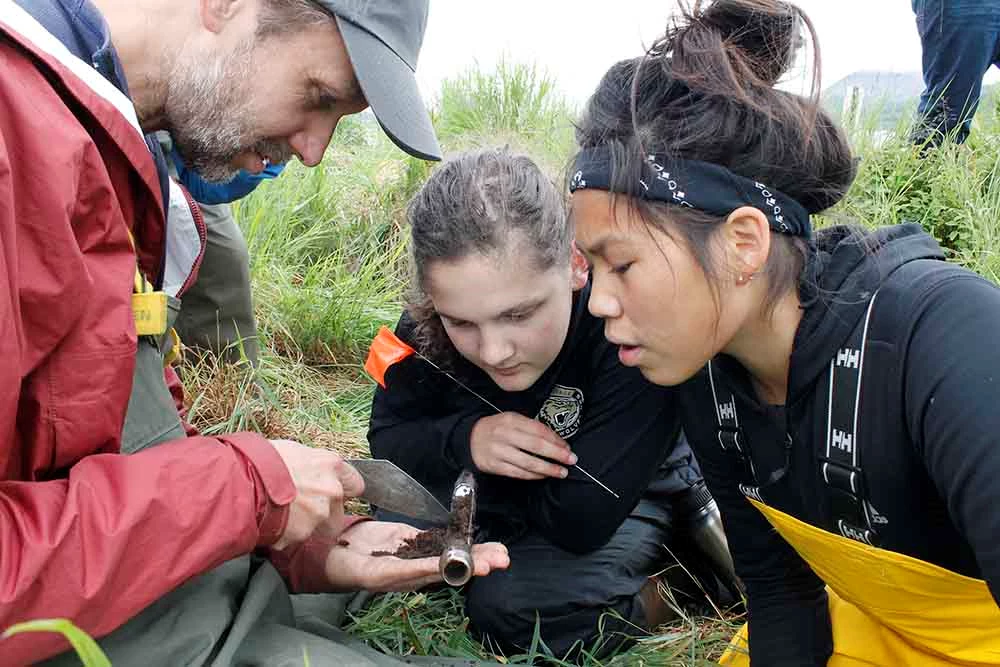
Nome, known locally as Sitnasuaq [Iñupiaq], lies at the southern edge of the environmentally and culturally diverse Seward Peninsula, the westernmost extension of the North American mainland. During the Last Glacial Maximum 24,000-15,000 years ago, sea levels were about 400 feet (120 m) lower than today, making the Seward “Peninsula” landlocked within the Bering Land Bridge. This swath of land connected Alaska to Asia and most archaeologists agree that it facilitated human migration to the American continents at the end of the Pleistocene, around 14,000 years ago. Ancestors to the contemporary Indigenous residents in the Bering Strait region are thought to have arrived around 4,000 years ago (e.g., Anderson 1984, Anungazuk 2009). Today the region is home to three primary cultural groups, Iñupiat, Central Yup’ik, and Siberian Yupik, and 20 communities.
Visible reminders of the area’s long human history—archaeological sites and heritage resources—are recognized and protected at local, tribal, state, and federal levels. However, the region’s archaeological sites are threatened by natural and human forces. Deeply rooted traditions and subsistence practices are also affected by the ebb and flow of ongoing cultural and technological changes. Local leaders are concerned about these changes to traditional ways of life and have also detected a growing need to support the next generation of youth with activities that encourage cultural preservation and stewardship.
The Nome Archaeology Camp was conceptualized by local cultural resource specialists driven to create opportunities to address heritage preservation concerns. More than 50 high school students from 14 Alaskan communities participated in the week-long camps held annually between 2015-2019. While at camp, students worked with scientific and conservation professionals from the National Park Service; Kawerak, Incorporated; Bering Strait Native Corporation; Alaska Geographic; and the City of Nome, as well as local experts and Elders from the Bering Strait region.
The cultural heritage of the Bering Strait is best understood through multidisciplinary methods and sources. The Nome Archaeology Camp was planned, and evolved, with that multifaceted approach in mind. From hands-on activities and experiments in the fields of archaeology and museum studies, to decolonizing methods of anthropology and community based participatory research, the camp outcomes were determined by the place and the people connected to it. By empowering the next generation of Bering Strait cultural heritage stewards, the camp serves the enabling legislation for Bering Land Bridge National Preserve: “to provide archaeological and paleontological study, in cooperation with Native Alaskans” (ANILCA 1980).
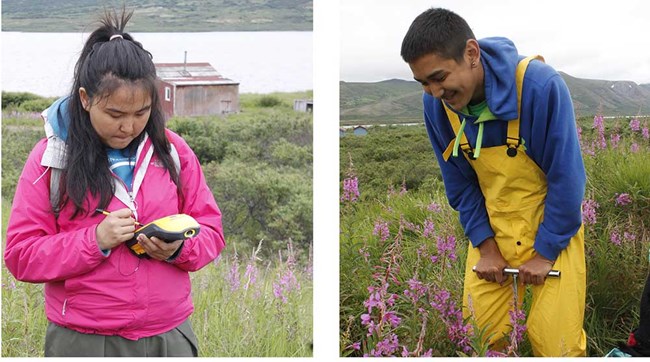
Ways of Understanding the Past
From their basecamp at Salmon Lake students were first taught to recognize human impacts on the environment. The area is popular for local recreation and subsistence and contains the spawning grounds for the northernmost run of sockeye salmon in the United States. Here, modern, historic, and ancient material culture dot the tundra providing a long record of land use, and an interactive learning opportunity for students of the Nome Archaeology Camp.
Guided by professional archaeologists and equipped with handheld GPS devices, measuring tapes, cameras, and field notebooks, students conducted an archaeological survey at small village site. One major departure from other archaeological camps or field schools is that the Nome Archaeology Camp is not centered on excavations. After identifying and recording visible features, students were taught to use a minimally invasive soil probe to assess subsurface remains. In 2015, students employed the probe to collect a small piece of charcoal from the center of a large circular depression, the remains of a semi-subterranean house. The sample was then prepared for radiocarbon dating, sent to a laboratory for professional analysis, and determined to be nearly 1,000 years old. Discussion of the site connected past land use to current land use and explained that destructive methods such as excavation are not required to learn more about the past.
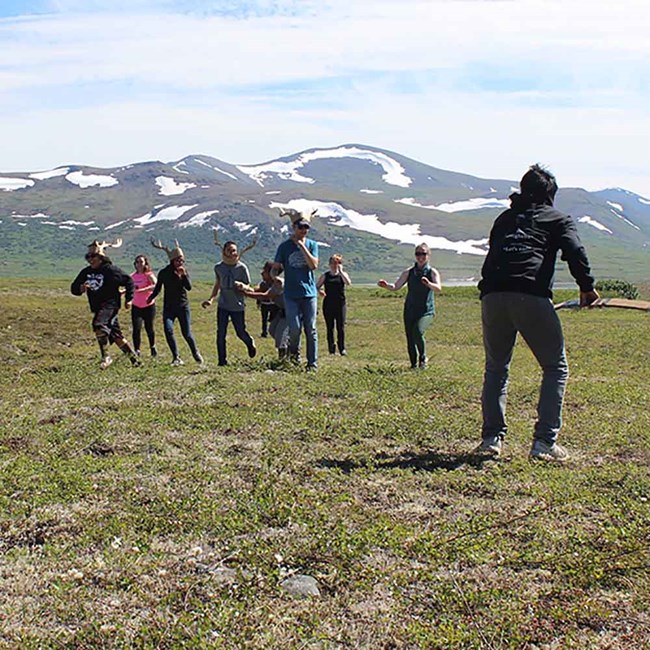
Just beyond the village site, students investigated a caribou “drive line,” stacks of rocks or inuksuk strategically positioned into two, gradually converging rows. These lines of rock are a traditional technique used to help funnel caribou into a corral where they can be harvested. Once the students identified the drive line using archaeological survey techniques, they reenacted a community hunt described in Lewis Binford’s, A Corporate Caribou Hunt. With the archaeological drive line as their stage and an ethnographic text as their script, students brought this traditional hunting method to life as they rotated through roles of both the community and the caribou. A favorite character to play was the rhythmic driver, a human mimicking a caribou that guides the herd to the waiting hunters by “move[ing] their upper torsos in a circular, up and down motion, and dip[ping] their heads as they lower their bodies” (Binford 1991: 38).
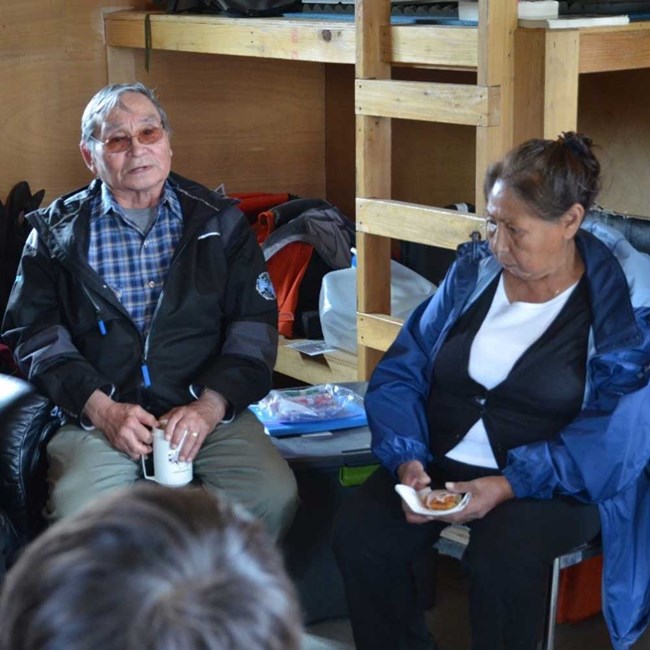
In all five seasons of camp, students learned from the experiences and wisdom of elders and local experts. Some of these honored guests described their upbringings and long-told family tales from the region. Others shared their knowledge about the uses and names of traditional plants, and many highlighted the intersection of oral history and science.
In 2016, Elder Guy Martin from Nome described a story, also detailed in People of Kauwerak, in which oral history played a key role in both relocating a long-lost stone monument and confirming the monument’s continuing cultural importance (Oquilluk and Bland 1973, Ganley 2009).
When scientists give a timeline and Elders give a timeline with their stories and when they mesh, they complement each other and there’s a period of veracity, a period of truth, which is gratifying to the memory of our elders and a complement to the scientific community, Martin explained in an interview with The Arctic Sounder (Grove Oliver 2016).
After listening to and recording oral histories, students reflected on their roles in continuing the tradition: to ask questions, show respect to elders, and most importantly, share the stories.
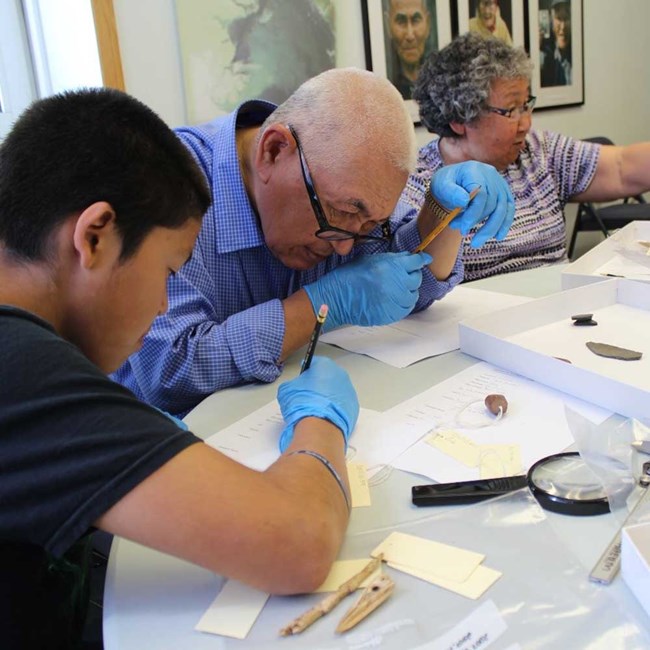
In addition to contributing systematic observations and scientific data to the long-term archaeological record, many students connected with this experience on a personal level.
[Recording the archaeological site was] … very enjoyable to me ... to even get a glance at how our ancestors lived and [see] all the stories I had been told of come to life as I saw the kinds of places they lived.
—Caitlin Tautuk Hanna, a 2016 camp participant
One artifact I’ll never forget is the tool that catches fish called naquq. It’s a beautiful little object and it is so intelligently put together. I think this tool took some time to perfect and hopefully in my future as an archaeologist I’ll find many other versions. Being here has really inspired me to do research of my own.
—Daphne Stein, a student from Kotzebue, explained what working with museum collections meant to her.
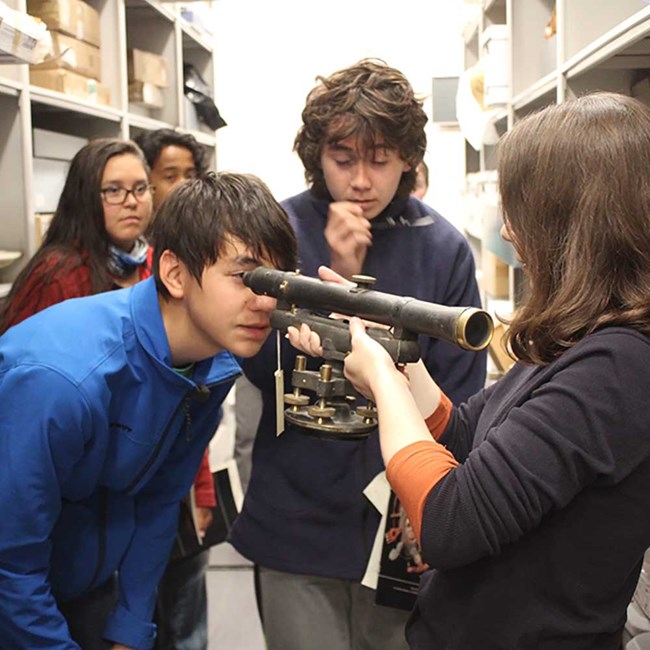
Bringing the Past into the Present
The relationship of the Nome Archaeology Camp to Nome’s Carrie M. McLain Memorial Museum and Katirvik Cultural Center has presented opportunities for students to learn cultural heritage preservation from community experts. Museums and cultural centers are a key source of interpreting the past and sharing information with the public. Camp activities developed each year as the local centers have grown. Such facilities in Nome are uniquely positioned to create environments, exhibits, and projects that are based on the priorities and cultural values of the region.
The Carrie M. McLain Memorial Museum experienced a significant upgrade during the span of the Nome Archaeology Camp. In 2016, the museum’s 15,000 historical and cultural objects, 12,000 photographic prints and negatives, and several hundred boxes of historical documents were transported to a new facility in Nome’s Richard Foster building, where they could be better housed and exhibited (Phillips-Chan 2020). Students of the Nome Archaeology Camp enjoyed behind-the-scenes insights as the collections moved to the new building. They also helped catalog and 3D scan a collection of ethnohistoric artifacts from Nome. When the new museum opened, students toured curatorial facilities and exhibits.

Next door to the museum is the Katirvik Cultural Center [Katirvik in Iñupiaq, Siberian Yupik, and Central Yup’ik is literally translated as “Gathering Place”], a facility designed to celebrate and share Indigenous knowledge and cultures from the Bering Strait region. Here, students participated in shaping the space as a place of learning and gathering. This included interacting with exhibits, traditional drumming and dancing, enjoying Indigenous foods, and participating in thoughtful discussions.
From Learning to Action
The content and instruction style of the camp evolved over the years to meet the unique needs and interests of the students in attendance. Social issues linked to self-identity and culture loss from western colonization are part of many Indigenous Alaskans’ experience. The individuality of students is deeply entwined with their ethnic identity and cultural socialization, and that identity may be strongly bound to a place, environment, or landscape (Nordström 2008). Through place-based education opportunities presented during Nome Archaeology Camp, instructors and mentors showed students that the revitalization and preservation of culture can be a healthy coping strategy.
As a final project, students summarized their experiences through presentations on the core subjects explored during camp. In addition to sharing what they learned, presentations were encouraged to include a direct action. Students advocated for public schools to include courses in Alaska studies, Native drumming, Alaska Native arts, and Indigenous language classes. Further, they supported a growing effort to use traditional place names and argued that state and federal regulations should enable local residents to harvest traditional foods.
Results, experiences, and action items from the five years of the Nome Archaeology Camp have been shared in classrooms, professional conferences, local newspapers, social media posts, newsletters, and in many conversations across Alaska and beyond. Students leave camp with academic credit through University of Alaska Fairbanks - Northwest Campus, competency in basic field science techniques, and an expanded understanding of the history and culture of the Bering Strait region. Many of the take-home lessons, however, are more connected to the future than the past. Instructors hope that after their time camp, the next generation of Bering Strait stewards feel empowered to ask questions and participate in cultural preservation efforts in the region they call home.
Acknowledgements
The Nome Archaeology Camp is a collaborative effort, made possible with support from Alaska Geographic, Bering Straits Native Corporation, Bureau of Indian Affairs, Carrie M. McLane Memorial Museum, City of Nome, Katirvik Cultural Center, Kawerak, Inc., Murie Science and Learning Center, National Park Service, Norton Sound Economic Development Center, Shared Beringian Heritage Program, and University of Alaska Fairbanks-Northwest Campus. Special thanks to Julie Raymond-Yakoubian, Amy Russell, Charlie Lean, Jeff Rasic, Matt Ganley, and the many elders, guest presenters, mentors, and experts who generously shared their knowledge and time. Thank you to the students of the Nome Archaeology Camp, and the families and communities who supported their participation.
References
Anderson, D. D. 1984.
Prehistory of North Alaska. In Damas, D. (ed.), Arctic. Sturtevant, W.C. (gen. ed.), Handbook of North American Indians, Volume 5. Smithsonian Institution, Washington, DC, pp. 80-93.
Anungazuk, H. O. 2009.
The Sea Is Our Garden: A Hunter’s View. In Gifts from the Ancestors: Ancient Ivories of Bering Strait, edited by William W. Fitzhugh, Julie Hollowell, and Aron L. Crowell, pp. 42-45. Princeton University Art Museum.
Binford, L. 1991.
A corporate caribou hunt. Expedition Magazine 33(1): 33-43.
Ganley, M. L. 2009.
Luck and the Art of Leaving No Stone Unturned: The Search for Bear Rock Monument. Chasing the Dark, Perspectives on Place, History and Alaska Native Land Claims, Volume 1, Shadowlands. Bureau of Indian Affairs, pp. 230-240.
Grove Oliver, S. 2016.
Students Explore at Archaeology Camp. The Arctic Sounder. August 5, 2016. Available at: http://www.thearcticsounder.com/article/1631students_explore_at_archaeology_camp (accessed June 2, 2021)
Nordström, H. K. 2008.
Environmental education and multicultural education: Too close to be separate? International Research in Geographical and Environmental Education 17(2): 131-145.
Oquilluk, W. and L. Bland, eds. 1973.
People of Kawerak, Legends of the Northern Eskimo. Alaska Pacific University Press.
Phillips-Chan, A. 2020.
Bering Strait narratives and collaborative processes of exhibit development in Nome, Alaska. Alaska Journal of Anthropology 18(1): 23-50.
Last updated: February 20, 2024
